Custom Manufacturing in Protective Packaging — Elementor
When it comes to shipping products, you can't overlook the importance of custom protective packaging. It not only protects items during transit but also enhances your brand's reputation. By utilizing advanced materials and design techniques, you can optimize shipping costs and tackle sustainability issues. Curious about how leading manufacturers are innovating in this space? Let's explore the various strategies that can elevate your packaging game.
Key Takeaways
- Custom protective packaging focuses on tailored solutions that minimize damage during transit and protect unique items from impacts.
- Innovative manufacturing processes like die cutting and thermoforming enable rapid prototyping of custom packaging solutions.
- Leading manufacturers offer diverse materials, including eco-friendly options, to meet specific protective packaging needs.
- Advanced design software and automation enhance efficiency and precision in creating custom packaging tailored to product dimensions.
- Sustainable practices, such as biodegradable materials and reusable systems, are increasingly important in custom packaging manufacturing.
Importance of Custom Protective Packaging
When you think about shipping your products, remember that custom protective packaging is essential for minimizing damage during transit.
Custom foam packaging provides tailored solutions that fit your unique items, ensuring they're shielded from impacts and environmental conditions. This not only keeps your products safe but also enhances your brand's reputation, as customers receive their orders in pristine condition.
Custom foam packaging offers personalized protection, safeguarding your products and elevating your brand image with every pristine delivery.
Plus, it allows you to optimize shipping costs by reducing void space, maximizing container efficiency. With a range of materials available, you can create sustainable options that align with your values.
Ultimately, investing in custom protective packaging leads to improved logistics, better inventory management, and the satisfaction that comes from knowing your products are well-protected.
Overview of Leading Manufacturers
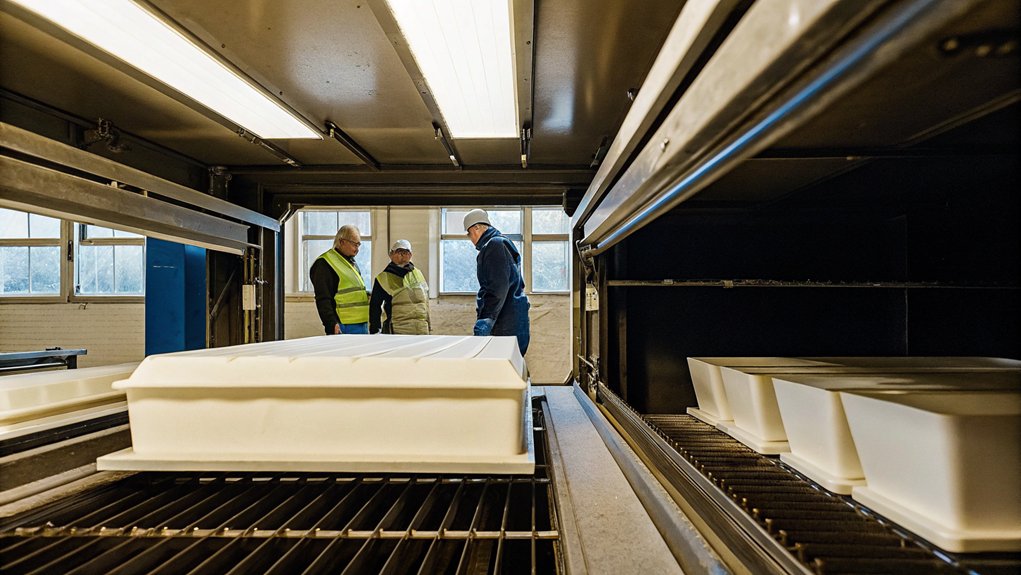
As you explore the landscape of custom protective packaging, it's essential to recognize the leading manufacturers that are shaping the industry.
Protective Packaging Inc. boasts over 30 years of experience, crafting custom foam packaging for major clients like Honeywell and GE.
Signode Engineered Solutions offers tailored options, including Multi-Wall™ Corrugated and PDM™ Foam Packaging, perfect for unique shipping needs.
Pregis excels in eco-friendly custom packaging solutions, serving industries like healthcare and electronics with air pillows and foam-in-place systems.
Uline stands out with a vast catalog and same-day shipping for various packaging needs.
Finally, Berry Global focuses on high-performance solutions, delivering durable materials for scientific instruments and consumer goods.
Together, these manufacturers exemplify excellence in custom packaging solutions.
Key Materials Used in Protective Packaging
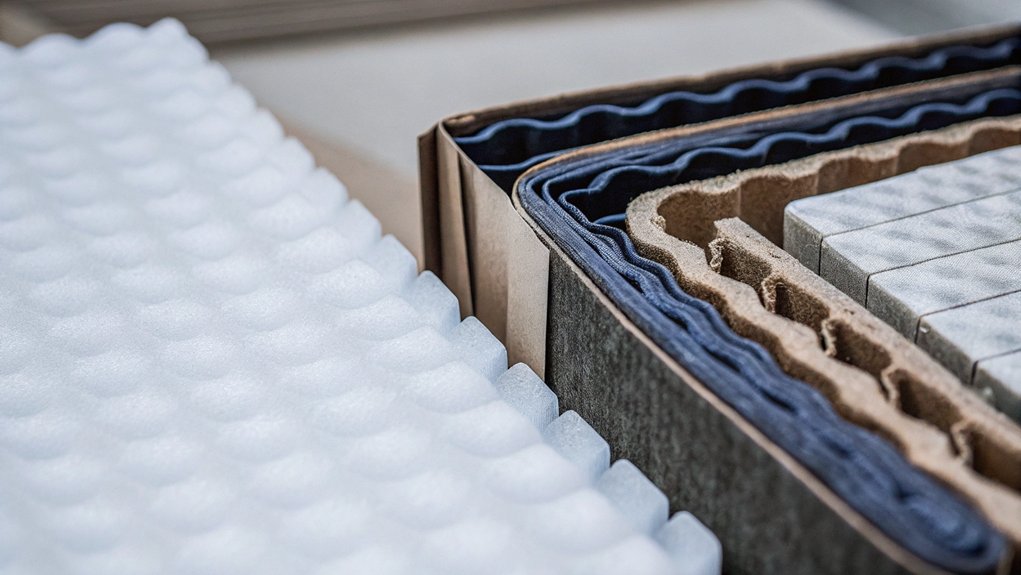
Understanding the key materials used in protective packaging can markedly impact the effectiveness of your shipping solutions.
Durable polyethylene and polypropylene foam provide excellent cushioning, making them essential in custom packaging solutions.
Lightweight plastic corrugated packaging is moisture-resistant and perfect for both one-time and returnable applications, enhancing versatility.
Honeycomb packaging, crafted from custom-engineered kraft paper, offers a cost-effective alternative to traditional cardboard while guaranteeing strong shock resistance for fragile items.
Molded pulp packaging stands out for its eco-friendliness, being 100% recyclable and biodegradable.
Finally, expanded polystyrene (EPS) delivers lightweight insulation and effective cushioning, making it a popular choice for delicate products.
Innovative Packaging Solutions for Fragile Items
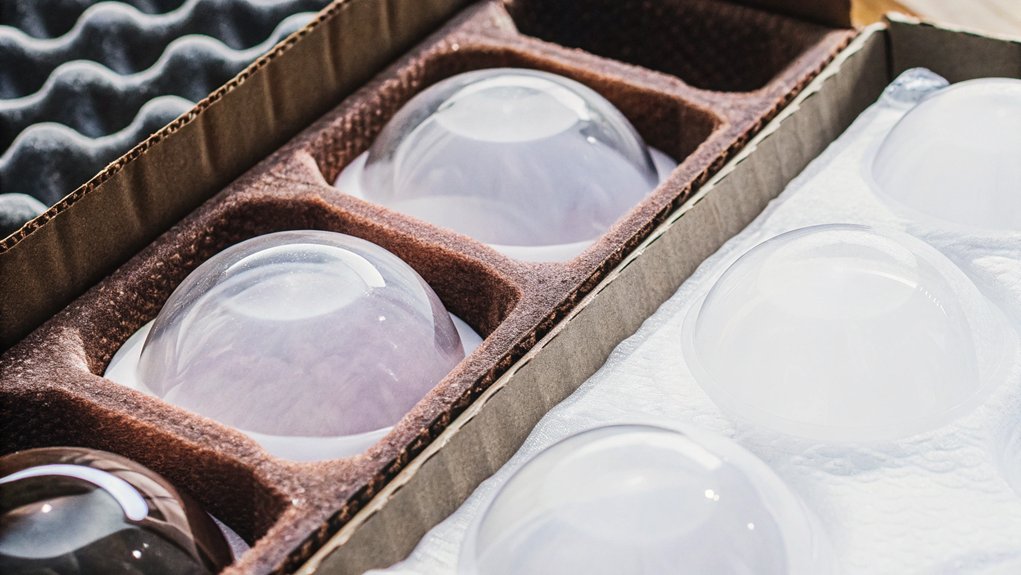
To protect fragile items during transit, innovative packaging solutions are essential, ensuring they arrive at their destination intact.
You deserve peace of mind knowing your delicate products are safeguarded. Here are some unique custom packaging solutions to take into account:
- Tailored foam solutions like polyethylene and polypropylene for ideal cushioning.
- Die-cut foam inserts offer a precise fit, minimizing movement.
- Advanced thermoforming techniques create custom plastic packaging that conforms to shapes.
- Eco-friendly options, like biodegradable foam, align with growing sustainability efforts.
- Rigorous testing in ISTA certified labs guarantees durability and safety.
Sustainable Practices in Protective Packaging
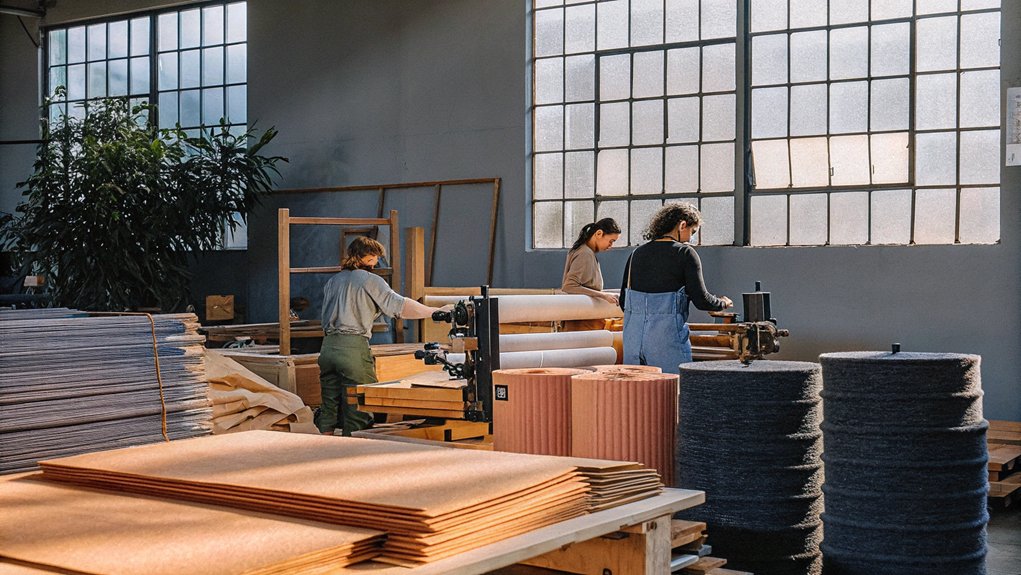
When you think about protective packaging, consider how eco-friendly materials can greatly reduce waste and enhance sustainability.
By choosing options like biodegradable foam or custom molded pulp packaging, you're not just protecting your products but also supporting a circular economy.
Plus, embracing reusable packaging systems means you can minimize single-use waste, making a positive impact on the environment.
Eco-Friendly Materials Utilization
As businesses seek to reduce their environmental footprint, eco-friendly materials in protective packaging are becoming essential.
By choosing sustainable options, you not only help the planet but also resonate with eco-conscious consumers.
Here are some innovative materials you might consider:
- 100% biodegradable foam for cushioning without environmental harm.
- Molded pulp made from recycled materials, offering a 100% recyclable solution.
- Honeycomb materials that provide excellent support while reducing traditional material reliance.
- Air pillows and foam-in-place systems designed to minimize waste.
- In-house testing facilities guarantee packaging optimization for performance and sustainability.
Embracing eco-friendly packaging isn't just a trend; it's a strategic move toward a greener future that aligns with your customers' values.
Waste Reduction Strategies
With eco-friendly materials paving the way for sustainable packaging solutions, businesses are now focusing on waste reduction strategies that complement these practices.
Implementing reusable packaging, like single-face and double-wall options, allows you to markedly cut down on waste. Custom biodegradable foam offers an eco-friendly cushioning alternative, ensuring your fragile items don't harm the environment when disposed of.
Utilizing molded pulp and wood products made from recycled materials further minimizes waste while effectively protecting your goods. By optimizing packaging designs through in-house testing, you enhance resource efficiency and lessen your environmental impact.
Choosing innovative materials, such as honeycomb structures, not only reduces material usage but also provides cost-effective packaging solutions that make a difference.
Let's embrace these strategies for a greener future together!
Recycling and Reusability Initiatives
Sustainability in protective packaging isn't just a trend; it's a necessity that drives innovation and responsibility in the industry.
Embracing recycling and reusability initiatives is key to creating a greener future. Here's how you can make a difference:
- Choose 100% recyclable and biodegradable materials.
- Opt for reusable packaging options designed for multiple uses.
- Support companies using custom-engineered kraft paper and molded pulp made from recycled materials.
- Advocate for biodegradable foam solutions that cushion while decomposing safely.
- Engage with manufacturers committed to testing and optimizing eco-friendly designs.
Benefits of Custom Foam Packaging
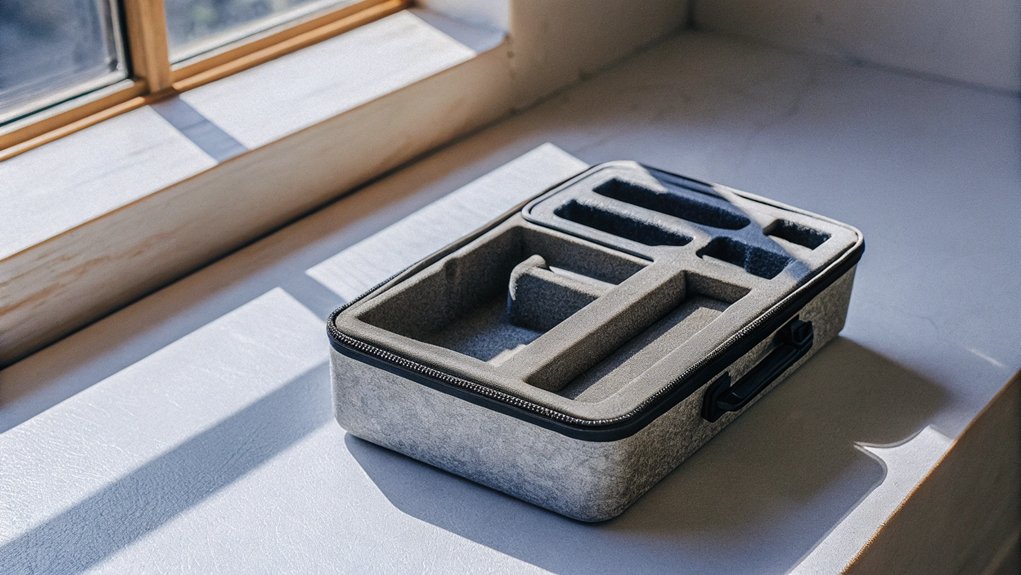
Custom foam packaging offers a tailored solution that greatly enhances the protection of fragile items during transit. By reducing the risk of damage by up to 90% compared to standard options, you can trust that your products will arrive safely.
With materials like polyethylene and polypropylene, custom foam packaging is lightweight yet durable, engineered to fit your specific dimensions for maximum cost-efficiency.
Foam fabrication services, including die cutting and assembly, allow you to create unique designs that cater to your product's needs. Plus, producing these solutions in-house guarantees quality control and timely delivery.
Opting for environmentally friendly options, like biodegradable foam, not only protects your items but also helps reduce your carbon footprint, aligning with your values and commitment to sustainability.
Case Studies of Successful Packaging Implementations
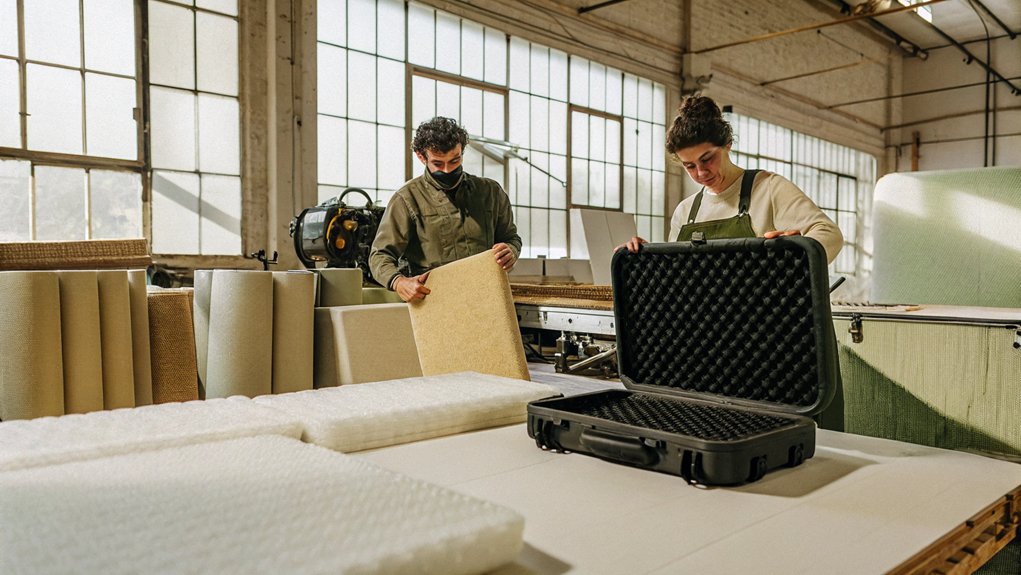
While many companies face challenges in ensuring product safety during shipping, successful case studies demonstrate the effectiveness of tailored packaging solutions.
Consider these compelling examples of innovative packaging options:
- Protective Packaging Inc. crafted custom foam solutions for GE, ensuring timely delivery of delicate components.
- Honeywell improved moisture resistance and cut shipping costs by 15% with plastic corrugated packaging.
- BAE Systems saw a 30% drop in damage claims thanks to tailored wood crating solutions.
- Teradyne's custom-fitted foam inserts boosted customer satisfaction ratings by 25%.
- Signode Engineered Solutions helped a manufacturer save 20% by introducing Multi-Wall™ Honeycomb Packaging.
These cases highlight how strategic packaging choices not only protect products but also enhance your company's reputation and bottom line.
How Technology Is Transforming Packaging Design
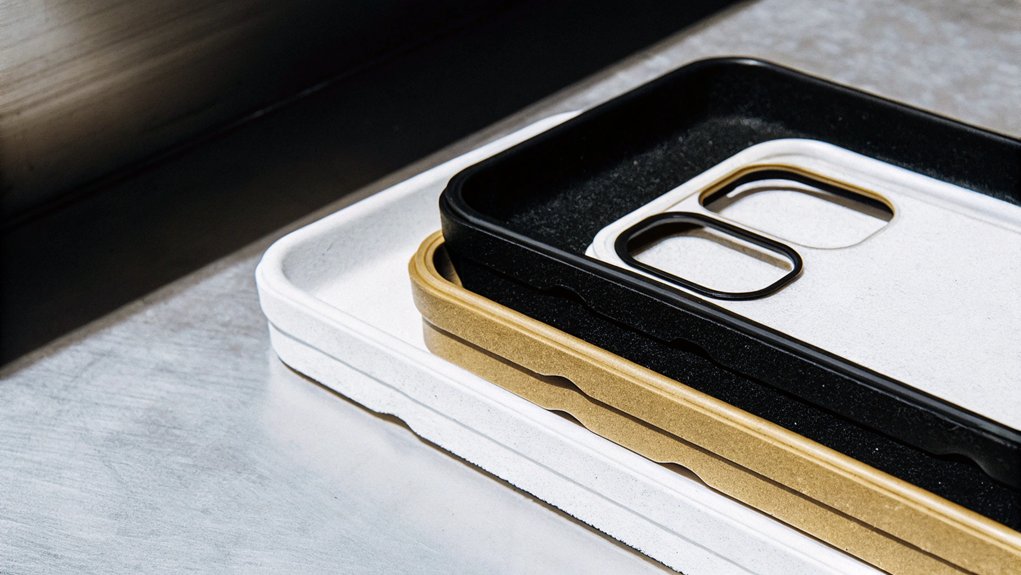
As technology continues to evolve, packaging design is undergoing a revolutionary transformation that directly impacts product safety and efficiency.
Advanced design software and 3D modeling enable you to create customized packaging solutions that fit your product's specific dimensions and protection needs.
Cutting-edge manufacturing processes like die cutting and thermoforming allow for rapid prototyping, streamlining your journey from concept to delivery.
By integrating automation and robotics, you enhance efficiency and precision, minimizing costs and errors.
Plus, with the rise of sustainable materials and eco-friendly technologies, you can meet consumer demand for responsible solutions.
Utilizing data analytics and IoT technology further optimizes your packaging designs, reducing damages during transit and ensuring your products arrive safely.
Challenges in Protective Packaging Manufacturing
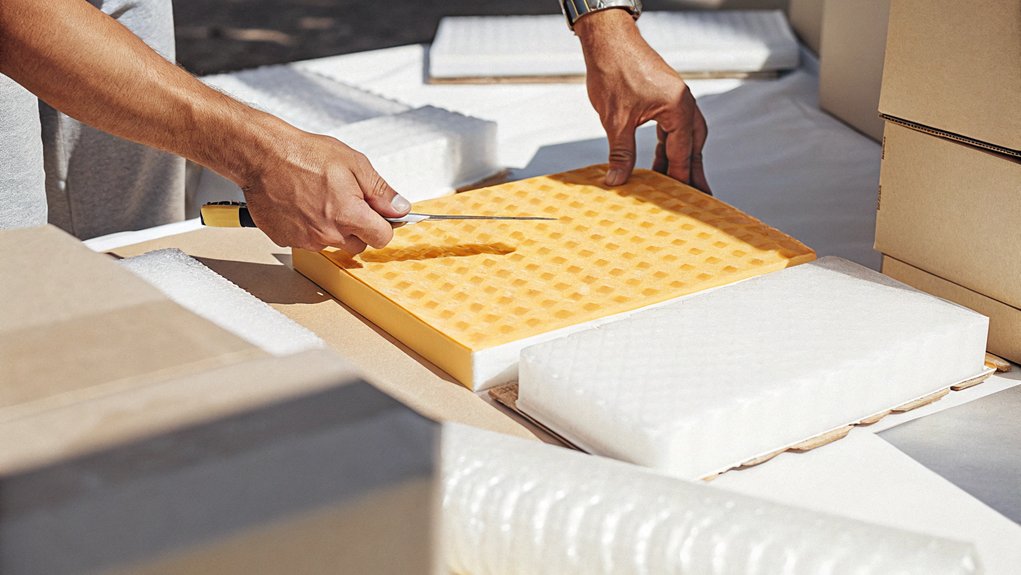
When it comes to protective packaging manufacturing, you're likely to face challenges with material selection and design complexity.
Choosing the right materials that provide both durability and sustainability can be tough, while creating designs that meet specific client needs adds another layer of intricacy.
Balancing these factors is essential to ensuring your packaging solutions are effective and efficient.
Material Selection Difficulties
Selecting the right material for protective packaging isn't just important; it's essential for ensuring your products arrive safely. However, you'll face material selection difficulties that can complicate the process. Consider these challenges:
- Sourcing sustainable materials while maintaining performance
- Variability in material properties like density and elasticity
- Compatibility with manufacturing methods, such as die cutting
- Regulatory compliance, especially in sensitive sectors
- Balancing cost-effectiveness with quality
Navigating these hurdles requires a strategic approach.
You'll need to assess your products' unique needs—like shock absorption or moisture resistance—while ensuring your choice aligns with environmental and industry standards.
Design Complexity Challenges
Designing protective packaging often presents a complex web of challenges that can make the manufacturing process feel overwhelming. As a packaging company, you need to navigate intricate specifications tailored to various product shapes, weights, and fragility levels.
Custom foam fabrication adds to these design complexity challenges, requiring precise die cutting and assembly techniques for ideal protection. Integrating materials like foam, wood, and plastic demands careful engineering to guarantee compatibility.
Balancing cost-effectiveness with high-quality standards can strain your budget, particularly when intricate designs increase production costs. Plus, rigorous testing for ISTA certification can extend timelines and complicate workflows.
Embracing these challenges, however, can lead to innovative solutions that solidify your place in the market and meet your clients' diverse needs.
Future Trends in Custom Packaging Solutions
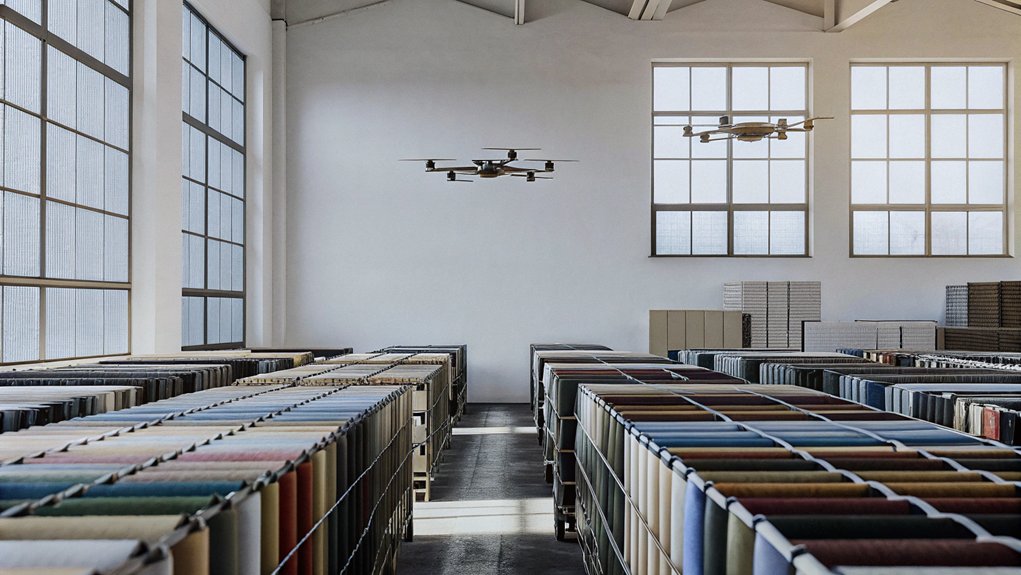
As the packaging industry evolves, you'll find that future trends are heavily shaped by sustainability, technology, and customization.
Embracing these trends won't only enhance your brand but also align with consumer expectations. Here are some key developments to watch for:
- Eco-friendly materials like biodegradable foams
- Smart packaging with sensors for tracking
- Tailored solutions that boost brand identity
- Lightweight designs for e-commerce efficiency
- Automation and AI to streamline production
Frequently Asked Questions
What Is Protective Packaging?
Protective packaging's all about keeping your products safe during transit and storage. It involves using innovative materials and designs to prevent damage.
You'll find options that utilize sustainable materials, like biodegradable foams or recyclable paperboard, which not only protect your items but also align with eco-friendly values.
How Is Packaging Manufactured?
When it comes to packaging manufacturing, you're really putting the cart before the horse without proper material selection.
First, you choose materials like foam or corrugated paper based on what your product needs. Then, you immerse yourself in design and engineering, crafting custom dimensions for an ideal fit.
Techniques like die cutting and thermoforming shape your materials. Throughout, you guarantee quality control, testing for durability, so your packaging not only looks good but performs well, too.
What Is Buyee Protective Packaging?
Buyee Protective Packaging is your go-to for tailored packaging solutions that meet your unique needs.
With Buyee Solutions, you get durable, lightweight options designed to minimize damage during transit. Their expert design team collaborates with you to create innovative packaging that balances sustainability and cost-effectiveness.
Whether you need molded foam inserts or custom crates, Buyee guarantees reliable protection for your fragile items, making certain your products arrive safely and securely every time.
What Is the Best Protective Packaging?
When it comes to finding the best protective packaging, you might think it's all about durability.
But what if I told you that sustainable solutions are just as essential? You need packaging that not only safeguards your products but also respects the planet.
Look for options like biodegradable foams and molded pulp that offer both protection and eco-friendliness.
Conclusion
In a world where nearly 30% of products are damaged during shipping, investing in custom protective packaging isn't just smart—it's essential. By prioritizing tailored solutions, you not only safeguard your products but also enhance customer satisfaction and brand loyalty. Imagine the impact of receiving a perfectly intact package versus one marred by damage! Embrace innovative, eco-friendly packaging strategies to stand out and meet the growing demand for sustainability while ensuring your products arrive in pristine condition.